Cytoplasm
Cytoplasm Structure
- Cytoplasm is a jelly-like substance found between cell membrane and nucleus.
- All the cell organelles are embedded in the cytoplasm. It is composed of water, organic and inorganic compounds.
- Cytoplasm is one of the essential components of the cell that is present in both plant and animal cells.
- Cytoplasm functions by controlling all the metabolic activities taking place within the cell and most of the chemical reactions are carried within it.
Endoplasmic reticulum
Endoplasmic reticulum is a network of tiny tubular structures scattered in the cytoplasm. It divides the intracellular space into two distinct compartments, one is luminal (inside ER) and another is extra luminal (outside ER). They function as the transport system of a cell, involved in transporting materials throughout the cell.
Endoplasmic reticulum is divided into two types based on presence and absence of ribosomes.
- Rough endoplasmic reticulum: The endoplasmic reticulum bearing ribosomes on their surface is called rough endoplasmic reticulum (RER). It is involved in the protein synthesis and secretion. They are extensive and continuous with the outer membrane of the nucleus.
- Smooth endoplasmic reticulum: The endoplasmic reticulum with the absence of ribosomes on its surface is called smooth endoplasmic reticulum (SER). They are responsible for lipid syntheses. In animal cells, lipid like steroid hormones is synthesized in SER. They are also responsible for detoxifying the cell.
Mitochondria
- Mitochondrion is a double membrane bound cell organelle that are not normally visible under the microscope.
- This cylindrical or sausage shaped structure is also called the power house of the cell as they are the sites for aerobic respiration of the cell and produce cellular energy in the form of ATP.
- The outer membrane and the inner membrane divide its lumen into two compartments i.e., inner compartment called matrix possessing single circular DNA molecule and a few RNA molecules. forming a number of infoldings called cristae and the outer membrane forming the continuous limiting boundary of the organelle.
- Depending on the shape, size and physiological activity of the cell, the number of mitochondria per cell are variable.
- The structure has a diameter of 0.2 to 1µm (average 0.5 µm) and length 1.0 to 4.1 µm.
Plastids
Plastids are large and membrane bound organelles that are found in all plants and in euglenoids. They contain some specific pigments that are responsible for imparting specific colours to the plants. On the basis of the type of pigment, plastids can be classified into three types.
- Chloroplasts: Chloroplasts are double membrane bound cell organelles that contain chlorophyll and carotenoid pigments that are responsible for trapping light energy and this energy is used for the purpose of photosynthesis.
Chloroplasts
The inner membrane surrounds a space called stroma. Chlorophyll containing structures called thylakoids are arranged as piles of coins and each pile is called a granum. Thylakoids are connected by flat membranous tubules known as stromal lamella.
- Chromoplasts: These include carotenoid, fat soluble pigments like carotene, xanthophyll etc. providing characteristic colours like yellow, orange, red, etc. to the plants.
- Leucoplasts: These types of plastids store nutrients and are colourless. They include amyloplasts storing carbohydrates, leucoplasts storing proteins, and leucoplasts storing oils and fats.
The Golgi Apparatus
- It is responsible for sorting, modifying, and shipping off the cellular products that come from the rough endoplasmic reticulum (ER), just like a post office.
- The Golgi apparatus is similar to stacked flattened discs, almost like stacks of oddly shaped pancakes.
- The Golgi apparatus has two distinct sides with each having a different role.
Lysosomes
- An organelle that contains enzymes that break down and digest inessential cellular components, such as a damaged organelle is called the lysosome.
- Protein products packaged by the Golgi such as digestive enzymes are meant to stay inside the cell in order to break down certain materials.
- The enzyme-containing vesicles are released by the Golgi, and they may form new lysosomes or fuse with existing lysosomes.
Vacuoles
- Vacuoles are generally characterized as storage bubbles of unpredictable shapes which are found in cells.
- They are liquid-filled organelles enclosed by a film.
- The vacuole stores the food or a spread of nutrients that a cell might need to survive.
- In addition, it also stores waste products.
- The by products are at last tossed out by vacuoles. Thus, the remainder of the cell is shielded from contamination.
- The animal and plant cells have different sizes and numbers of vacuoles. Compared to animals, plant cells have larger vacuoles.
- Books Name
- Yash Tyagi Coaching Science Book
- Publication
- ACERISE INDIA
- Course
- CBSE Class 9
- Subject
- Science
Cell Organelles and their Functions
Cell organelles and their functions
There are many types of organelles that help the cell in performing different functions. The different organelles are :
- Endoplasmic reticulum
- Ribosome
- Golgi bodies
- Lysosomes
- Mitochondria
- Plastids
- Vacuole
- Centrosome
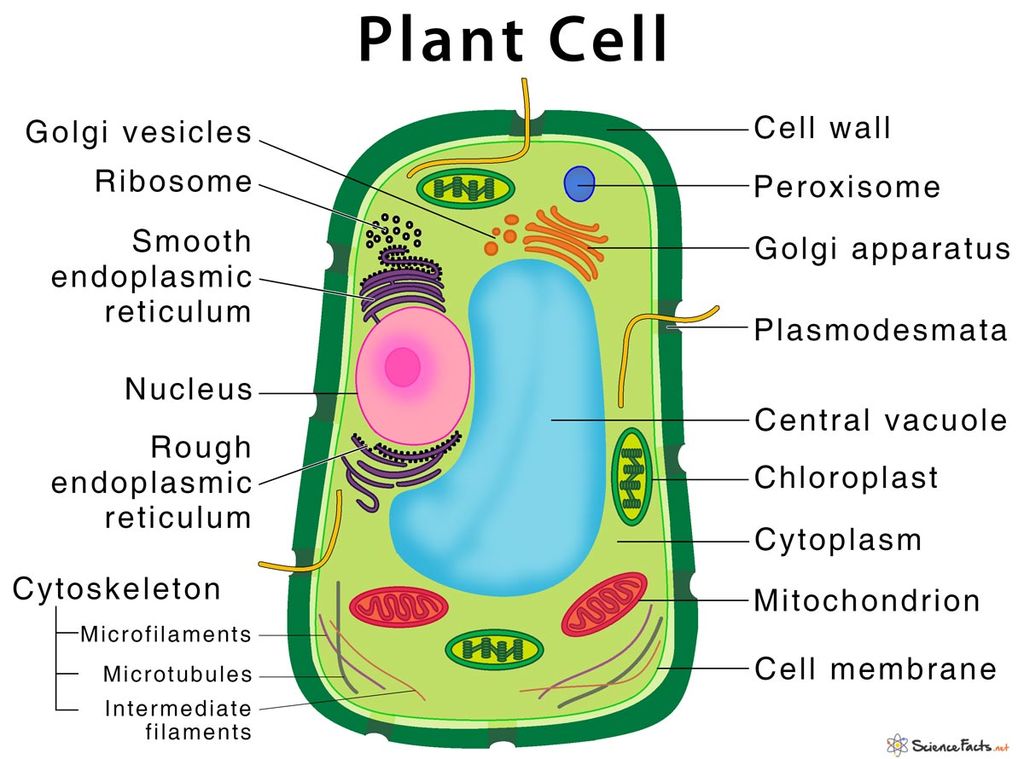
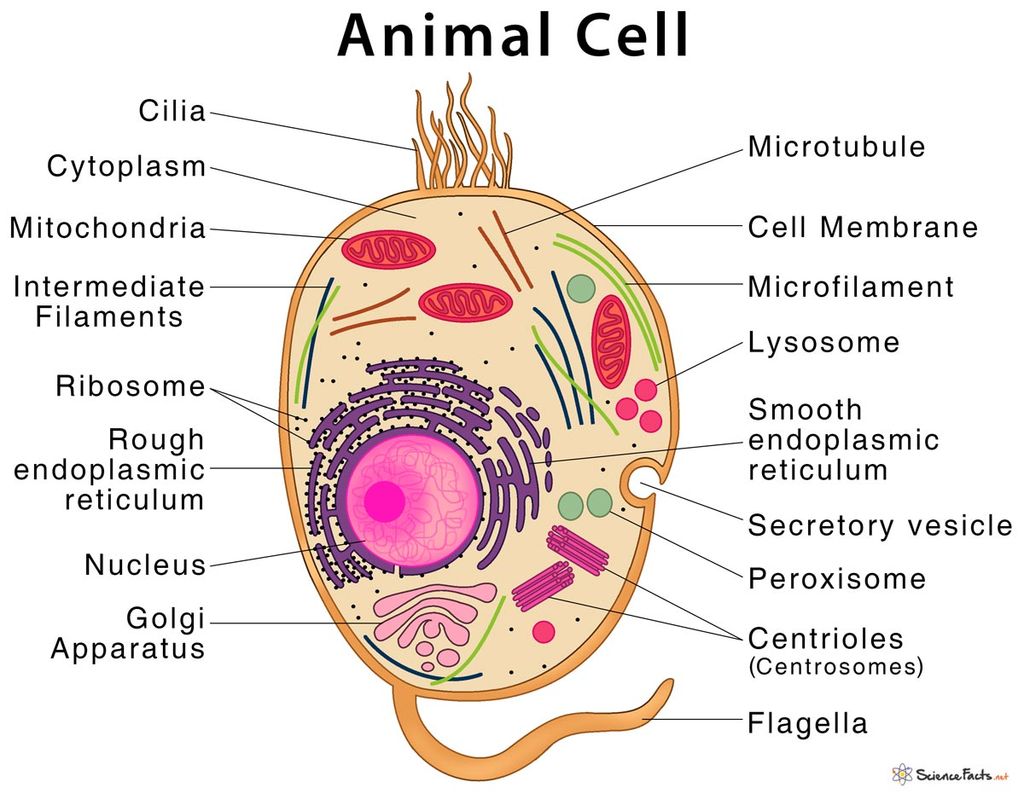
Let us study them in detail:
1. Endoplasmic reticulum
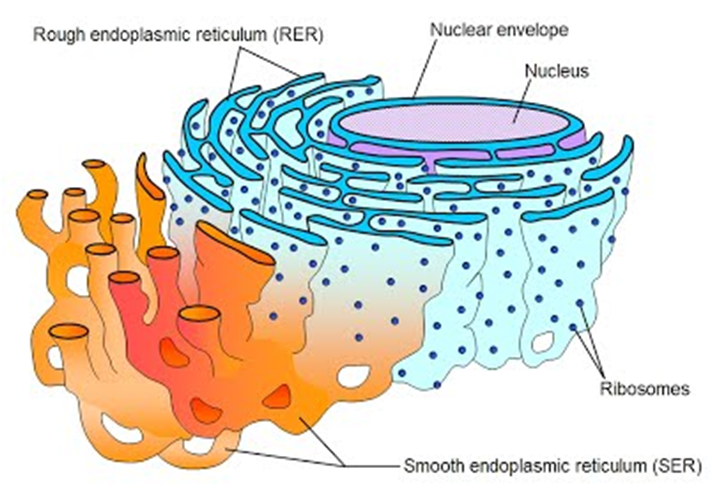
It is an irregular network of membranes enclosing fluid in its cavity .they are of two types that is:
- Rough endoplasmic reticulum(RER)
- Smooth endoplasmic reticulum(SER)
The basic difference between the two is that:
- RER – It has ribosomes attached to it.
- SER : – No ribosome are attached
Functions of endoplasmic reticulum are as follows –
- SER helps in synthesizing fats etc.
- Endoplasmic reticulum forms skeleton framework of cell.
- Rough endoplasmic reticulum helps in transportation of proteins.
- Smooth endoplasmic reticulum helps in detoxification.
- Oxidative enzymes of lysosomes are produced by Rough endoplasmic reticulum.
- Endoplasmic reticulum helps in formation of membrane of cell .That is :
RER – SER – Golgi body – sec. vesicles – p membrane
2. Ribosomes
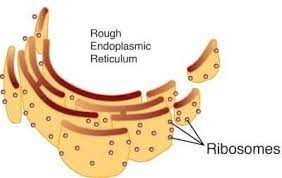
They are present in plant as well as in animal cell. They are spherical particles found free or attached to Rough Endoplasmic Reticulum. They contain their own genetic material that is RNA & proteins .Their function is protein synthesis. Due to the reason they are called as factory of proteins.
3. Golgi bodies
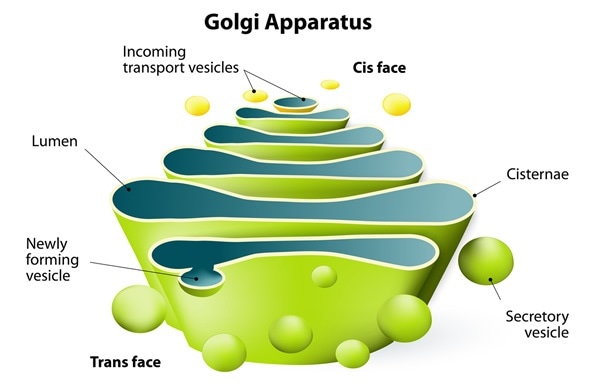
This organelle is present in plant and animal cells both. They are membrane bound fluid filled vesicles and flattened membranes stacked over one another called cisternae. In plant cells it is called by a special name that is Dictyosome. Function: They secrete, packages and dispatch the cellular secretions and also helps in the formation of cell membrane.
4. Lysosomes
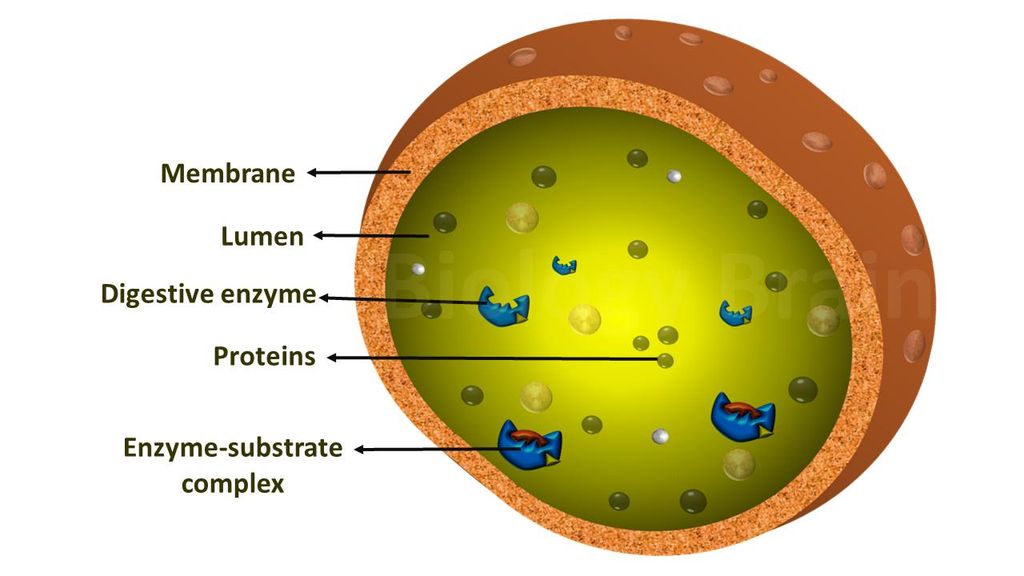
They are present in plant as well as in animal cell. They are membrane bound vesicle containing powerful digestive enzymes. These enzymes can carry out the catabolic function
Function: Its functions are:
- They can destroy foreign material.
- They can remove worn out parts of the cell.
It acts as suicidal bags as they can even eat up their own cells if in case it gets damaged.
5. Mitochondria
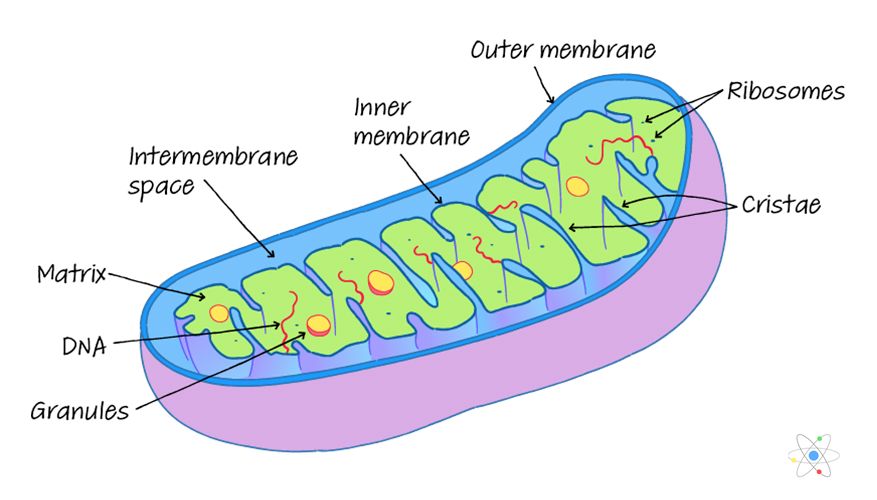
They are rod shaped structures having a double membrane.
- Its outer membrane is – porous
- Its inner membrane is folded to form cristae & contain small bodies called oxysomes.
- It has a cavity that is filled with matrix (fluid) containing DNA and ribosomes.
- Its function is to produce energy in the form of ATP (Adenosine triphosphate) and is also designated as called as Power House of cell (due to production of energy).
6. Plastids
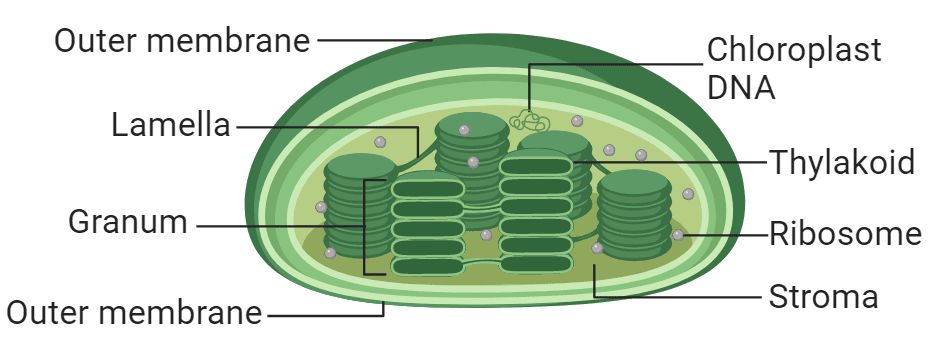
These are only found in plant cells. They are of three types: –
- Leucoplast – It is colorless plastid.
- Chromoplast – It is colored plastid.
- Chloroplast –It is green colored plastid.
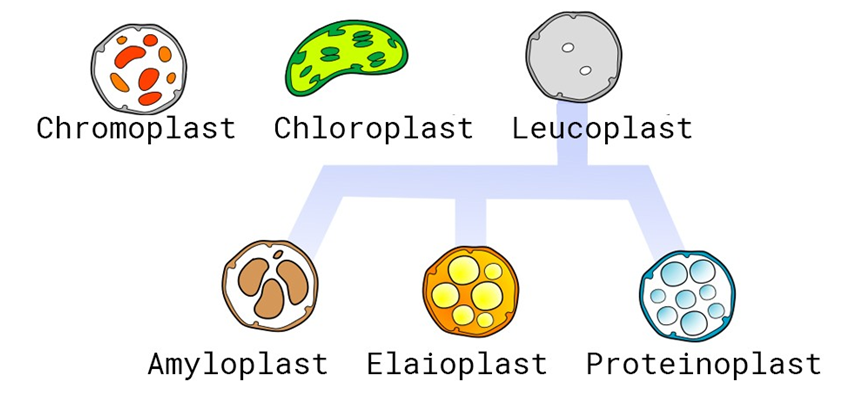
As you all know that plants have the ability to synthesize their own food. They do so with the help of pigment chlorophyll. This chlorophyll is present in organelle chloroplast.
Chloroplasts are double membrane organelles containing liquid stoma and stacked structures called lamellae. When lamellae are stacked over one another they give rise to grana. Grana contain green pigment chlorophyll. This chlorophyll actually helps in capturing solar energy and converting it to chemical energy of food.
Functions of plastids are as follows –
- Chloroplast helps in photosynthesis
- Leucoplast – stores food, fats etc.
- Chromoplast impart colour to flowers.
7. Vacuole
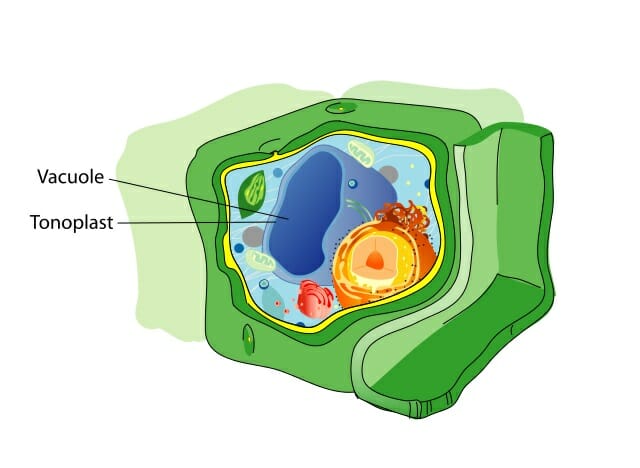
They are fluid filled membrane bound spaces. They are prominent and large in plants but in animal cell they are either absent or if present they are small and temporary. In animal cell it helps in storing substances. In plant cell vacuole are large & permanent. Outer membrane is called as tonoplast and is filled with fluid called cell sap Functions of vacuole are as follows
- It provides turgidity & rigidity to cell.
- It stores substances.
- It maintains the osmotic pressure of cell.
8. Centrosome
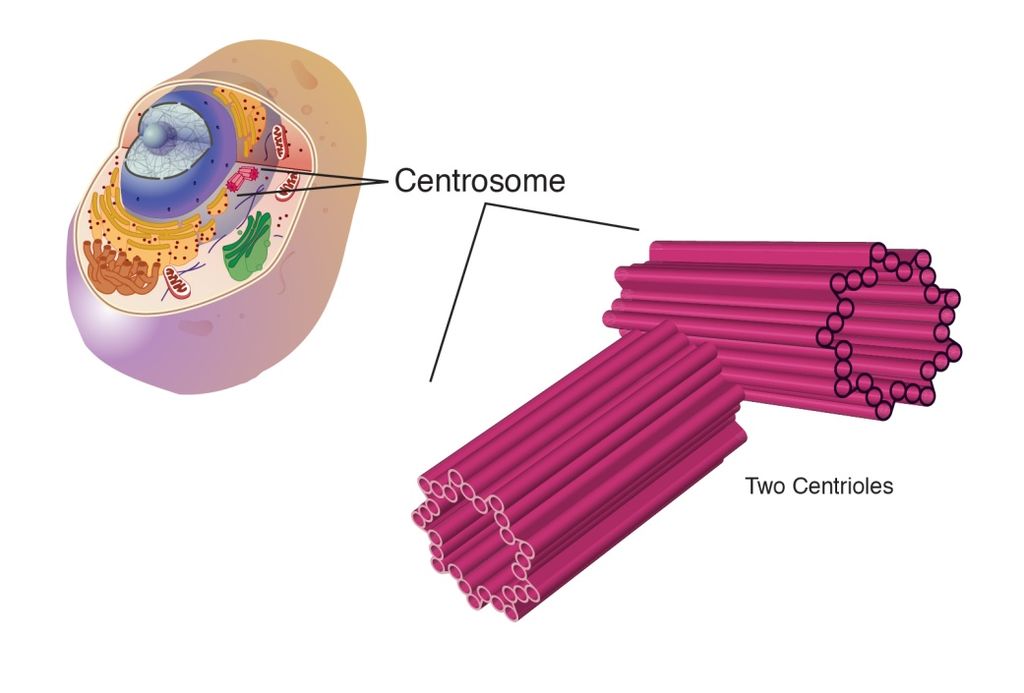
It is found only in animal cell. It consists of two granules called centrioles. The function of centrioles is to help in spindle formation during cell division.
Transportation of substances
As we have seen that substances move in and out from the cell. These exchange mainly occur by two processes:
- Diffusion
- Osmosis

 Vaishnav Publication
Vaishnav Publication
 ACERISE INDIA
ACERISE INDIA
